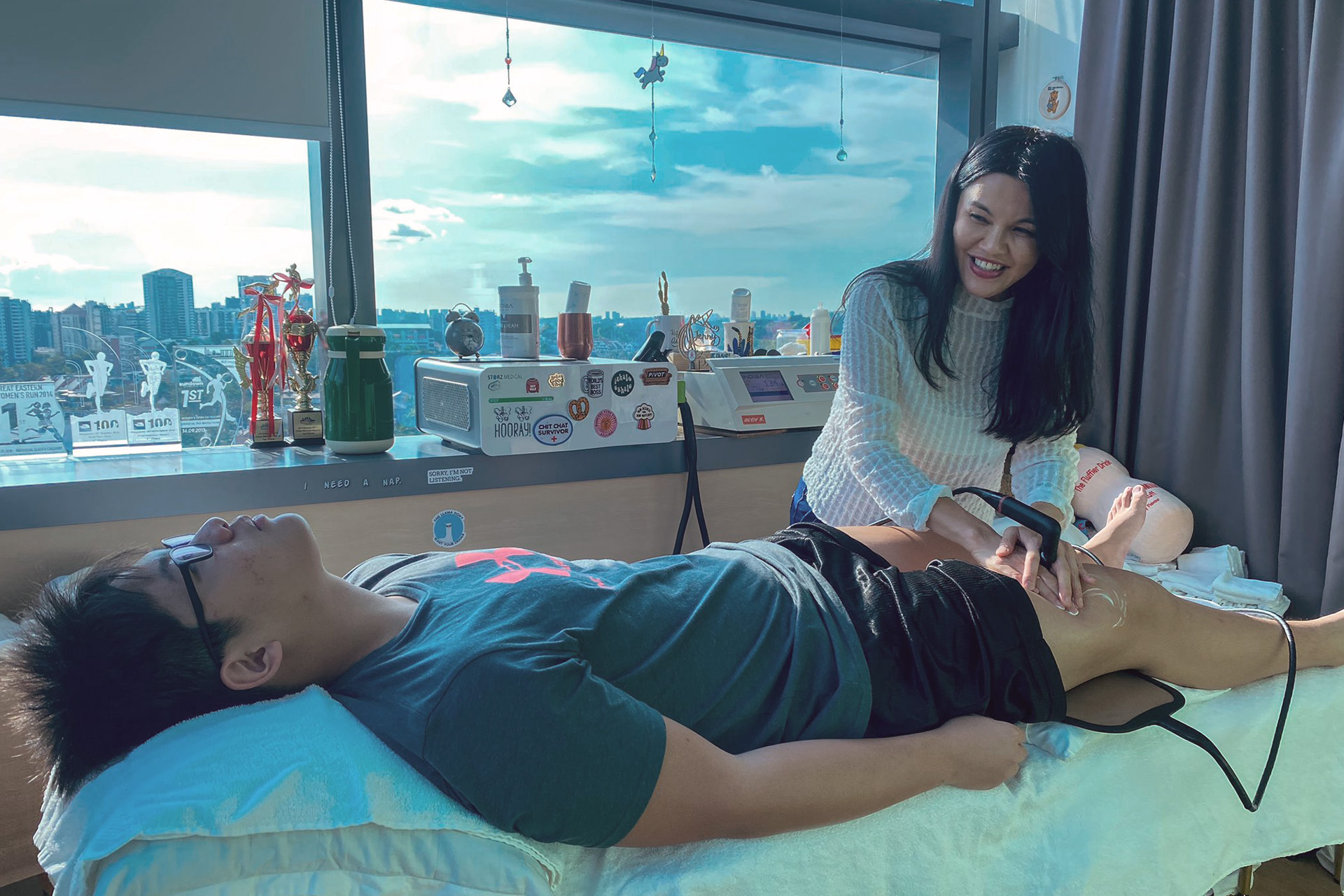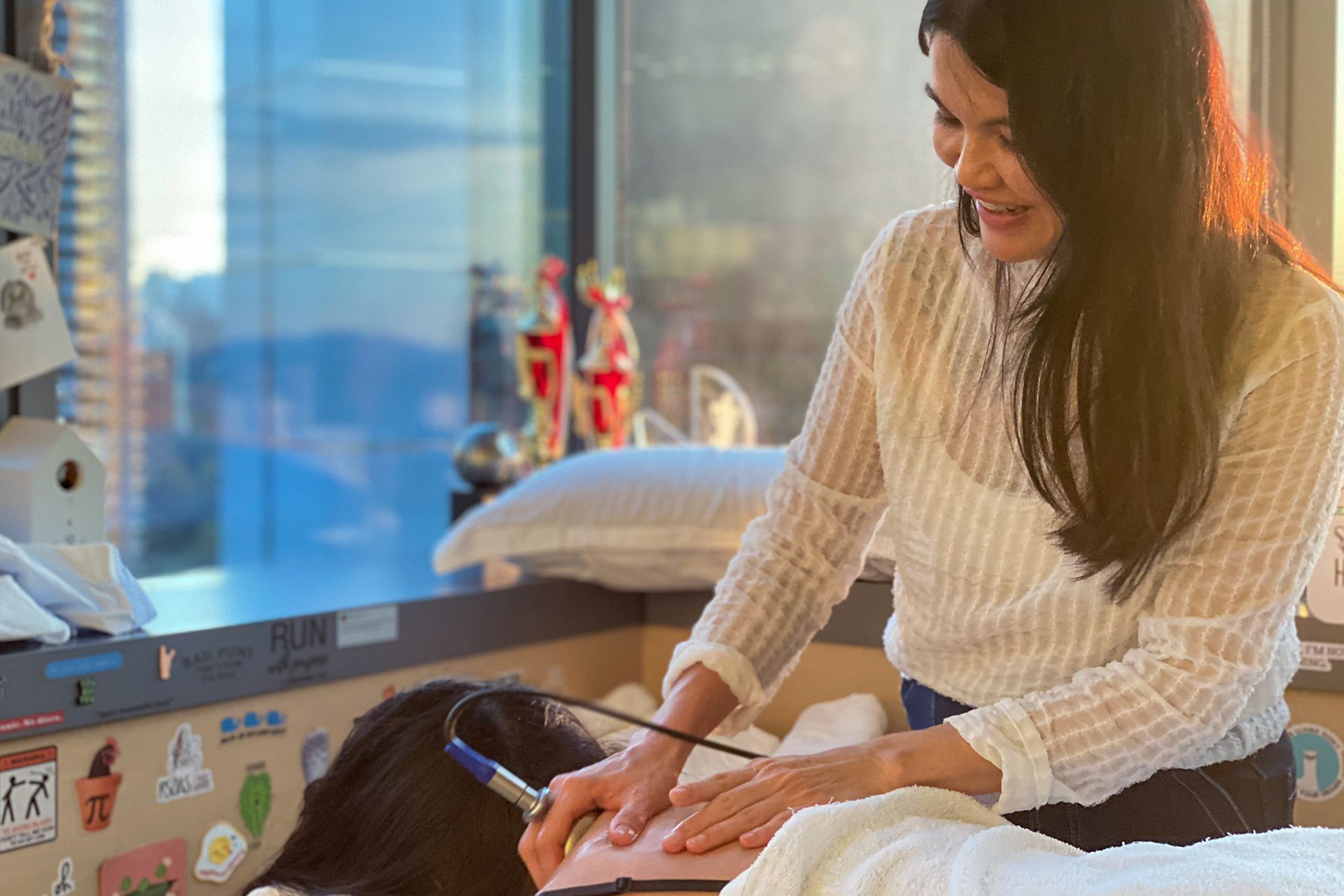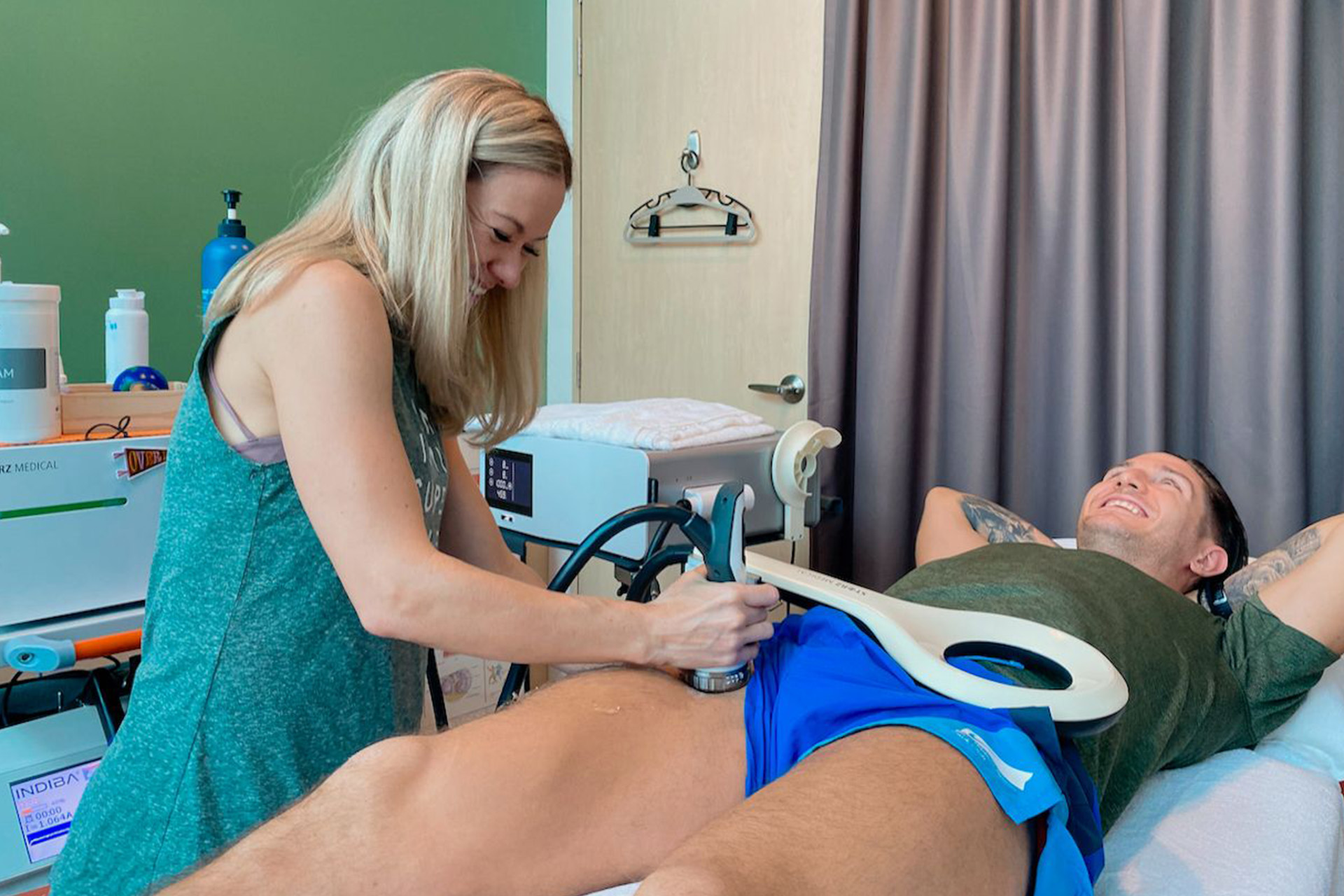Musculoskeletal Disorders and Soft Tissue Injuries
HelloPhysio treats musculoskeletal disorders with sound clinical knowledge of injury presentation coupled with the latest in adjunctive technologies. Our physiotherapy clinic’s treatment philosophy is a collaborative approach with the patient at the core of their own recovery journey. Our clinic’s passionate about your overall musculoskeletal health and resilience against future soft tissue injuries.

What Is a Musculoskeletal Disorder?
More than 150 conditions can be classified as musculoskeletal disorders (MSK). These affect the nerves, tendons, muscles, and supporting structures in your body, such as your back discs. They range from acute sudden injuries, such as fractures, sprains, and strains, to those that are considered chronic or lifelong and are associated with ongoing functional limitations and disability.
Musculoskeletal disorders happen through repetitive strain injuries, microtrauma that accumulate in an acute condition or occupational disorders from work activities. The condition is typically characterized by frequently persistent pain limiting mobility, dexterity, and overall level of function of the body. This affects the patient’s ability to work and live an active lifestyle.
When musculoskeletal imbalance happen in the body, the body’s reparative function supersedes its ability to heal itself. These imbalances lead to inflammation and other physiological indications of pain. The most frequent cause of musculoskeletal dysfunctions of the bones, joints, muscles, tendons or ligament include:
- Muscles use chemical energy from sugars and produce byproducts like hydrogen ions that are released when muscles contract as adenosine triphosphate is broken down. As the flow of blood slows during contraction, toxins accumulate that irritate muscle fibers. The intensity of pain experienced is directly related to the length of muscle contraction, the duration between repetitive movements and the ability of the body to flush out the toxins.
- Tendons are made up of numerous fibrous membranes that produce a lubricating fluid to help muscle and joint function. When the tendon, surrounding muscle or bone becomes injured, the tendon sheath becomes inflamed and becomes painful. This is especially true for athletes where repetitive activities create a lot of friction, but it’s also prevalent in professional trades too.
- Nerves transmit signals from the brain to control the body’s function from regulating body temperature and the pain indication. When muscles, tendons and ligaments expand and contract, the repetitive movement compresses the nerve to create the “pins and needles” sensation we often feel with a musculoskeletal injury.
What Causes Musculoskeletal Disorders and Related Pain?
Musculoskeletal pain and swelling can range from mild to severe, with discomfort in the muscles, bones, ligaments, tendons, and nerves. Pain can be localized and felt in only one part of the body or more widespread in conditions like fibromyalgia.
Musculoskeletal damage goes beyond repetition and stress – cumulative risk factors and conditions contribute to musculoskeletal disorders, including: osteoarthritis, rheumatoid arthritis, osteoporosis, fractures, sarcopenia or spine and back pain.
The more than 150 different musculoskeletal conditions can be segmented into:
Physiotherapy is vital for treating back pain holistically to restore complete mobility by addressing the root causes and biomechanical imbalances of your discomfort.
Foot and ankle injuries are a painful and frequent musculoskeletal condition that can be caused by a simple misstep or a more serious traumatic incidence. The severity of a foot and ankle soft tissue injury range from a minor crack in the bone to tendon and ligament dysfunctions such as in Achilles tendonitis, plantar fasciitis or heel spurs.
Even minor injured areas such as ankle sprains can immobilize you and prevent you from doing the simplest daily activities such as walking to work without pain.
Patients with hand, wrist, and elbow injuries or dysfunctions can benefit from our comprehensive physiotherapy services with most up-to-date techniques and technologies to improve function and reduce pain. HelloPhysio helps patients who are suffering from conditions related to their upper extremities including: arthritis, carpal tunnel syndrome, fractures, nerve injuries, post-operative hand wrist and elbow surgeries, tendonitis, or simple sprains.
Explore our Hand, Wrist, and Elbow Physiotherapy treatments →
Depending on the nature of your hip pain or injury, physiotherapy may be an essential part of a non-surgical treatment plan to relieve pain and strengthen the muscles surrounding the joint. Physiotherapy is also especially integral to your orthopedic surgeon’s aftercare treatment plan following hip replacement surgery.
Our physiotherapists will provide you with a tailored treatment plan based on your goals and abilities following total knee or hip replacement surgery. HelloPhysio’s entire continuum of care improves clinical outcomes to enable you to resume your normal activities faster.
Explore our groundbreaking Total Joint Replacement Physiotherapy →
HelloPhysio takes a comprehensive and multidisciplinary approach to treat knee pain. Our exceptional manual therapy techniques are only matched with the latest in-clinic technologies.
With the right neck pain physiotherapy treatment plan, your discomfort can be alleviated and optimal function restored through complementary manual therapies and advanced adjunctive technologies to restore mobility in your neck and back.
HelloPhysio treats at our shoulder pain clinic in Singapore. By combining manual therapy with trailblazing technologies.
Explore Physiotherapy for Shoulder Pain & Shoulder Impingements →
Total joint replacement physiotherapy at HelloPhysio evolves beyond functional movement retraining. The importance of physical therapy after knee replacement or hip surgery begins even before surgical interventions.
Getting the right diagnosis from a trained practitioner will help to address both the injury and the rehabilitation which follows. Self-diagnosis and online treatments can often cause further complications down the line by not getting to the root cause of the musculoskeletal dysfunction.
What is the most effective treatment for a musculoskeletal disorder?
Patients who benefit from our musculoskeletal physical rehabilitation program include those who suffer from acute orthopedic trauma, post-operative patients following joint replacement surgery, or those diagnosed with chronic pain conditions.

As physiotherapy is a catalyst of patient care, HelloPhysio’s physio and rehab team empowers patients with the latest evidence-based information, clinical therapies and leading technology to help you regain function, and without pain.
HelloPhysio’s physiotherapy is tailored to the needs of the individual, depending on the nature of the problem or disease. Explore the various services we provide for patients our physiotherapy clinic in Novena.
Using manual therapy with proper adjunctive state-of-the-art equipment to enhance tissue healing, our physiotherapists help clients return to pain-free movement faster. Each physiotherapy rehab plan is never the same for each client as we believe in a personalized physio treatment to address each individual’s musculoskeletal injury and life stressors.
We always believe in going one step more at our rehab center in Singapore by providing continuous care that extends beyond just the physical session to adding Telehealth as part of physio treatment plans. From traditional to sports physiotherapy in Singapore, our clinic incorporates the lastest evidenced-based modalities into patient care.
EMTT® is an advanced technology developed in Switzerland for the treatment of bone, tendon, muscle, nerve and ligament injuries or disorders throughout the body. This is a state-of-the-art therapy is a non-invasive, safe alternative to steroid injections and other interventions.
EMTT can be used to as a pain relief practice to reduce inflammation in difficult to treat conditions such as bone injuries, stress fractures and arthritic joints. We also use of the technology in harder-to-treatment of conditions such as tendinopathies at our Novena physiotherapy clinic in Singapore.
Extracorporeal Shockwave Therapy (ESWT) uses shockwaves outside of the body to harness intense short energy waves to reduce pain and heal chronic orthopedic conditions at our rehab center in Singapore. It is a non-invasive but powerful adjunctive physiotherapy treatment that delivers acoustic waves to injured soft tissue to for pain relief and to promote healing.
Using both Focal and Radial ESWT at our physiotherapy clinic, Shockwave Therapy a non-invasive treatment to assist with quick healing of injured tissues (muscles, tendons, ligaments, bone, etc) at a cellular level. Shockwave works by activating a tissue response by making tissues restart the healing faster while creating minimal scarring.
Being one of the very few physio clinics in Singapore to fully utilized INDIBA for active rehab, we are proud to say our clients who have received the radiofrequency treatment have reported a decrease in pain immediately post treatment.
INDIBA uses one-of-a-kind long wave radiofrequency of 448 kHz frequency to treat acute, subacute and chronic states of injury. INDIBA creates a therapeutic physio treatment with manual or sports physiotherapy to facilitate tissue recovery while decreasing pain.
Clinical Pilates is instructed by our highly-experienced trainers to promote strong, stable movement to build muscle strength, improve range of motion, activate postural muscles and the body-brain connection for integrated movement patterns.
As part of our Singapore rehab center, Clinical Pilates targets spine and pelvis alignment in conjunction with breathing and inner core muscles to balance and strengthen the body. Each session may use various rehab techniques, including Pilates reformers, barrel, Stahl bars and other physiotherapy equipment.
Sports Massage uses intense, detailed manipulation of the soft tissue – muscles, tendons, joint capsules, and fascia – targeted at trouble spots. Specializing in injury management and chronic pain relief massage, and as part of our Singapore sports physio treatments, sports massage therapy helps enhance athletic performance by preventing training injuries and decreasing recovery time.
The massage sessions are highly focused with applied techniques, including myofascial release, deep compression, muscle stripping, and friction, trigger point therapy, stretching, and corrective exercises.
Red Light Therapy at HelloPhysio energizes cells to drive a host of physiological processes in the body by interacting at the cellular level to restore normal cell function.
Also known as Photobiomodulation, the near infrared therapy improves blood circulation, increases the rate of recovery after injuries, decreases pain and inflammation, boosts energy levels, improves muscle performance, aids in sleep, and a host of other benefits.
As a treatment option at our Novena physiotherapy clinic, Dry Needling is a popular and effective means to treat pain using a sterile needle inserted to trigger points of the muscle and/or fascia to activate our body’s response for a natural anti-inflammatory recovery process, especially for sports physiotherapy clients. Trigger points are targeted by dry needling as other techniques may not be able to go so deep.
Lymphatic Drainage Therapy (LDT) is a gentle and non-invasive technique that activates the body’s circulation to help the immune system by working with the interstitial and lymphatic system.
Craniosacral therapy is a non-invasive process balancing the powerful flow of the cerebrospinal fluids and the nervous system. It is used to activate the body to self heal and restore body balance as part of our services at our physio rehab center in Singapore.

